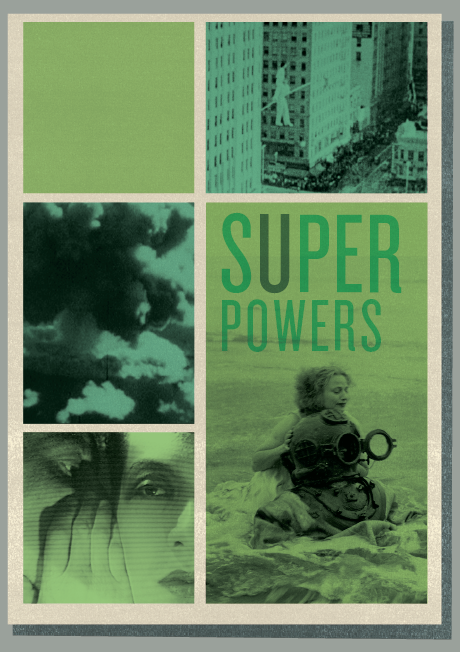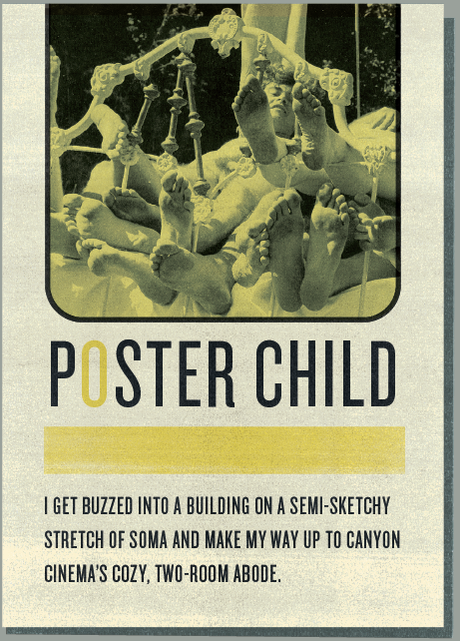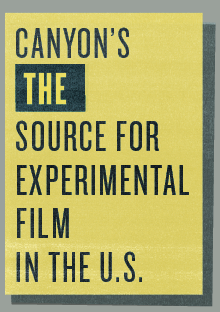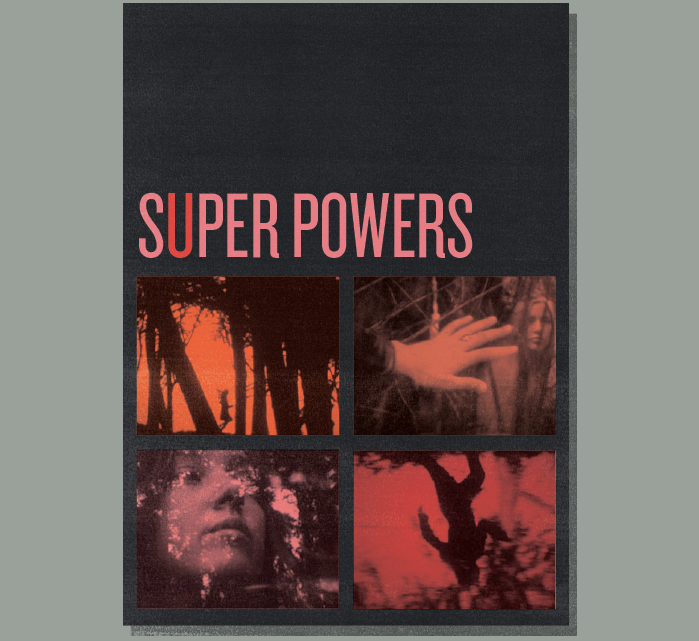
By Kimberly Chun
I’m waiting for a glimpse of it, folded into a rickety seat at Artists’ Television Access (ATA), the city’s pint-size underground film and video venue on a particularly hopping block of Valencia Street — ready for SF Cinematheque’s “Women of the West: ’70s Bay Area Experimentalists” shorts program. The only catch: The screen is dark and the theater is pitch black. The 1972 film I’ve been psyched to see — Folly, by the late Oakland filmmaker Freude Bartlett — has snapped, the victim of age and wear, just as its smudgy female protagonist swept across the screen.
I expect no cheers, jeers, or wisecracks tonight: The audience of film students and cinema-philes is respectfully silent and patiently waits in the darkness until the fleet-fingered projectionist has repaired the film and we’re back on board. Soon, I’m sinking deliciously into the deep and gorgeous waters of Moon’s Pool, watching a nude woman and man swim and swirl through silvery blue waters in Gunvor Nelson’s ode to fluid sexuality and tidal intuition.
I took a stab at making my own experimental film during grad school when I hastily deconstructed a bloated, explosive Elvis Presley. The reel is decaying in a box somewhere, but it’s time once again to rediscover my passion for celluloid. I’m dipping a tippy toe in and relocating a few frames, a few makers and shakers of the still-unspooling local experimental film scene and its DIY gold.

I fork over my cash to the unfailingly polite, short-coiffed hipster ladies at the ticket-taking table by the door, and find a seat among the chatty SF Art Institute moviemakers and singleton art-film fans dressed in bohemian black. ATA’s congenial, homey white-walled space is more Quaker meeting room than a place for cinematic revolution.
This ferociously independent, never-quite-definable cinema community has been bubbling since the late Frank Stauffacher began a wildly popular and influential “Art in Cinema” film series at the San Francisco Museum of Modern Art in 1946. Fast-forward to 2010: It’s being toasted, roasted, and loopily documented in Pacific Film Archive’s first book, Radical Light: Alternative Film and Video in the San Francisco Bay Area, 1945–2000.
The accompanying Radical Light film series, which includes tonight’s Women of the West and continues through March 31, is my chance to get a gander of the local movies and makers touched on by the book — a wild bunch who showed their films however they could or wherever they could, and in the process, founded one of the first Cinematheques in the country. Tonight I’m especially drawn to The Struggle of the Meat by Anne Severson, an evocative experiment with found sound that refuses to be harnessed to the stance any one animal-rights cause.
I decide to take my exploration of SF’s experimental film world to its heart: Canyon Cinema, the distributor for many of the moving images captured in Radical Light, and its executive director and filmmaker Dominic Angerame.



Above the husky, T-shirted filmmaker with smile lines etched into his face is an impressive clutch of vintage posters. A circus-style flier depicts legendary artist-moviemaker Bruce Conner dabbing paint on an elephant in a run for SF supervisor. Handmade collages promote Robert Nelson flicks, and an immaculate psychedelic-era poster emblazoned with a fallen angel touts a 1967 screening of Kenneth Anger’s Lucifer Rising. Bob Dylan grumbles in the background.
Behind his window-side desk, overlooking reels of film ready to be inspected and sent forth once more, Dominic tells me Canyon Cinema began in 1961 as a loose gathering of local filmmakers. They screened their movies from a kitchen window in a Canyon, California backyard. Other backyards and basements followed, and eventually Canyon Cinema became a distribution company, strong-arming film critic Earl Bodien into lending his apartment — and the services of his wife, who rocked her child with one hand and answered the phone with the other.
Everyone-in-the know agrees: Canyon’s the source for experimental film in the U.S., whereas Paris has Light Cone. “San Francisco is still one of the major experimental film capitals, I would say, in the world,” Dominic says matter-of-factly as he shows me reels ready to sally forth overseas. Looking around the jam-packed space, I’m amazed that he manages to fit the entire operation into these scant few rooms. Today, the co-op distributes 3,500 films, while returning 50 percent of the rental fees to its member filmmakers (most distributors return 10 percent).
“Basically, our filmmakers run the show here, “ says Dominic, who came on board in 1980. When he first started at Canyon, he says he made $3.25 an hour “in food stamps!” I imagine Netflix has cut into the business, and Dominic admits that it is has, although those competitors, along with the rise of video art and online aggregators like YouTube, have also fed a burgeoning interest in experimental cinema. I can believe it — after hearing ‘round town about the many art-school students who want to dive into both video and filmmaking.

But how does a rising DIY moviemaker make his or her way today in a mediascape cluttered with screens both big and small? At SFMOMA, I’m seeking out SF experimental filmmaker Paul Clipson. He holds down a steady film job at the museum, but is perhaps best known for his live cinema collaborations with bands such as Tarentel and Arp. Across the atrium mobbed with tourists and art fiends, he pops out from behind the central staircase — a friendly face in the art-mad crowd — and then leads me to the Phyllis Wattis Theater projection booth.
Surrounded by El Topo and Alphaville posters and strips of celluloid pinned to the wall and pasted to the keyboard of the MacBook with which he edits his films, Paul opens a web page and shows me one Super 8 experiment: Chorus, an eloquent, hypnotic meditation on double-exposed street lights, which glitter or shatter in puddles and glassy reflections. The spellbinding in-camera effects are perfectly in sync with the score — a mesmerizing drone by Gregg Kowalsky.
I find it a bit tough to believe Chorus was all done with very old-school Super 8, a form that appeals to Paul because “it’s very tactile and almost kind of pulpy, like a food — the colors are really intense.” The medium allows him to work quickly — shooting urban spaces, reflections, movements, or whatever he’s fascinated with — and then permits him to swiftly put together his films.

“I like the humbleness and immediacy of Super 8. I shot yesterday. I’m going to shoot today. I can just go out anytime — it’s like picking up a guitar, and you just start.” Paul’s enthusiasm is infectious — I want to pick up his camera and go make some enthralling images. For Paul, this seat-of-his-pants strategy goes hand in hand with his live film collaborations with musicians. He’s often surprised by how well his images and the music gel together, whether it’s at Bottom of the Hill or the Lab, or on the road in Europe.

Paul sits me down in the theater to watch Union, made earlier this year for a performance with musician Jefre Cantu-Ledesma at the New York Film Festival. Gazing at the shadowy figure of a girl climbing uphill then running downhill, again and again, through a labyrinth of trees and then into a nightmarish cityscape, I feel myself entering that dream state that Dominic details, due to the unique quality of the celluloid.
“Think of a motion picture projector as a rapid slide projector, projecting 24 frames per second,” Dominic had told me at the Canyon office, the sunlight outside glinting off Ninth Street. “And in between each frame, there’s an instantaneous moment of blackness so you don’t see the other frame being pulled down. This occurs 24 times per second, and it creates a flicker. Projectors are so good you don’t see the flickering now, but the fact remains, if you go to a movie theater and watch a projected celluloid 90-minute film, you’re going to spend virtually 27 minutes in total darkness.
“Now, if you put someone in a darkened room for 27 minutes, they’re going to get agitated, they’re going to get a little uncomfortable, and a little nervous,” he continues. “They might daydream, they might meditate, they might fall asleep, and they might have some dreams. Maybe that’s what happens when a celluloid film is projected. Maybe it gives the audience a chance to react to each and every frame because that blackness is creating that kind of space.”
That’s just the kind of dream space I’m gratified to have rediscovered, watching Paul’s dance of light and shadow flicker across the screen — a playground of fecund darkness, a tabula rasa for your strangest imaginings.

Want to get a peeper-ful of the Bay’s art film history? The book Radical Light: Alternative Film and Video in the San Francisco Bay Area is available at City Lights and Booksmith. The Radical Light Film Series is holding screenings at the Pacific Film Archive on Feb. 2, 6, 9, and 16. Paul Clipson will be screening his work on February 10 with Jefre Cantu-Ledesma at the Hemlock, on February 20 with Date Palms at the Great American Music Hall, and on February 24 at at Artists’ Television Access with other local filmmakers. San Francisco Cinematheque and Other Cinema show experimental films at Artists’ Television Access.
Design: Chelsey Dyer







